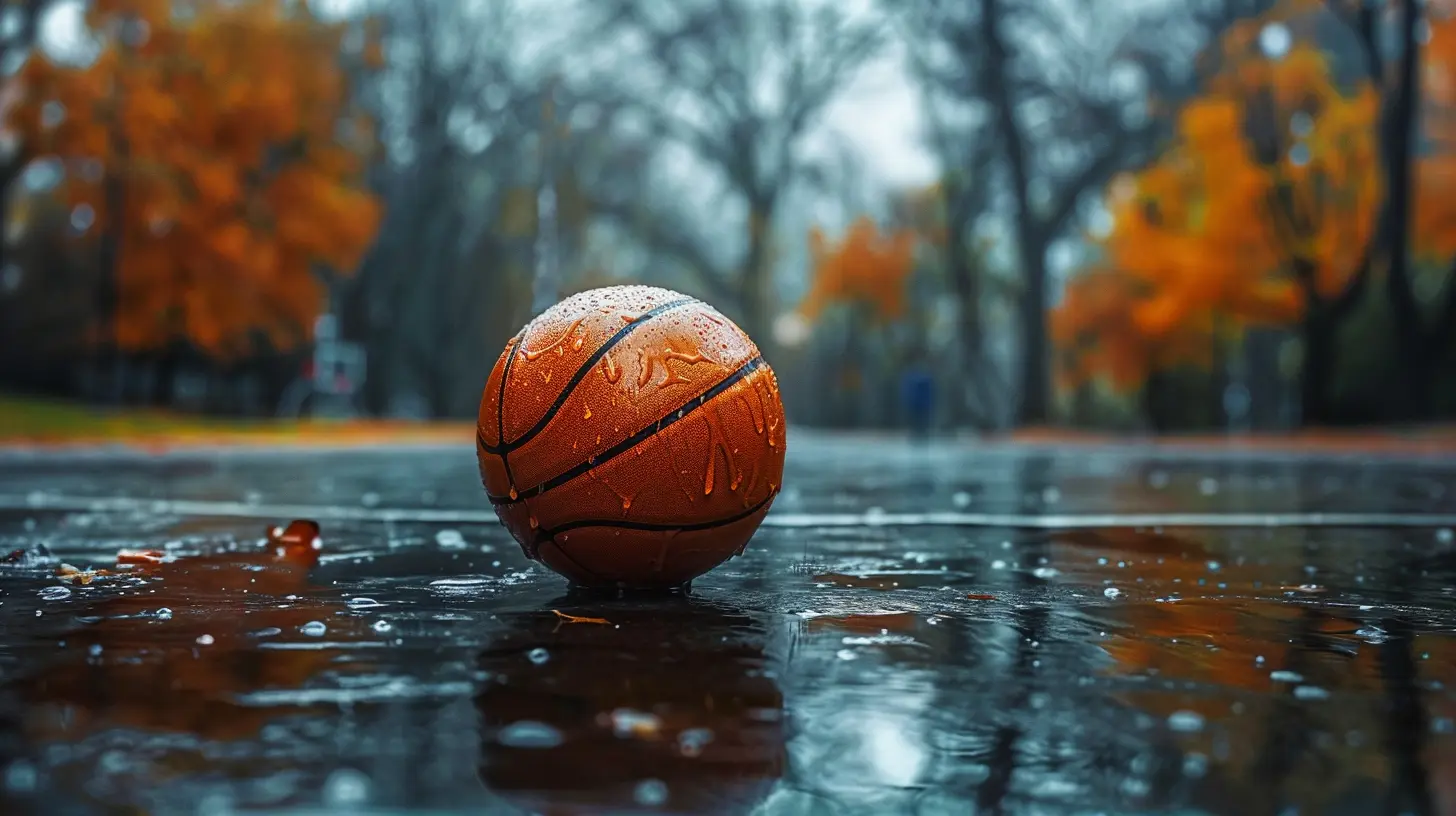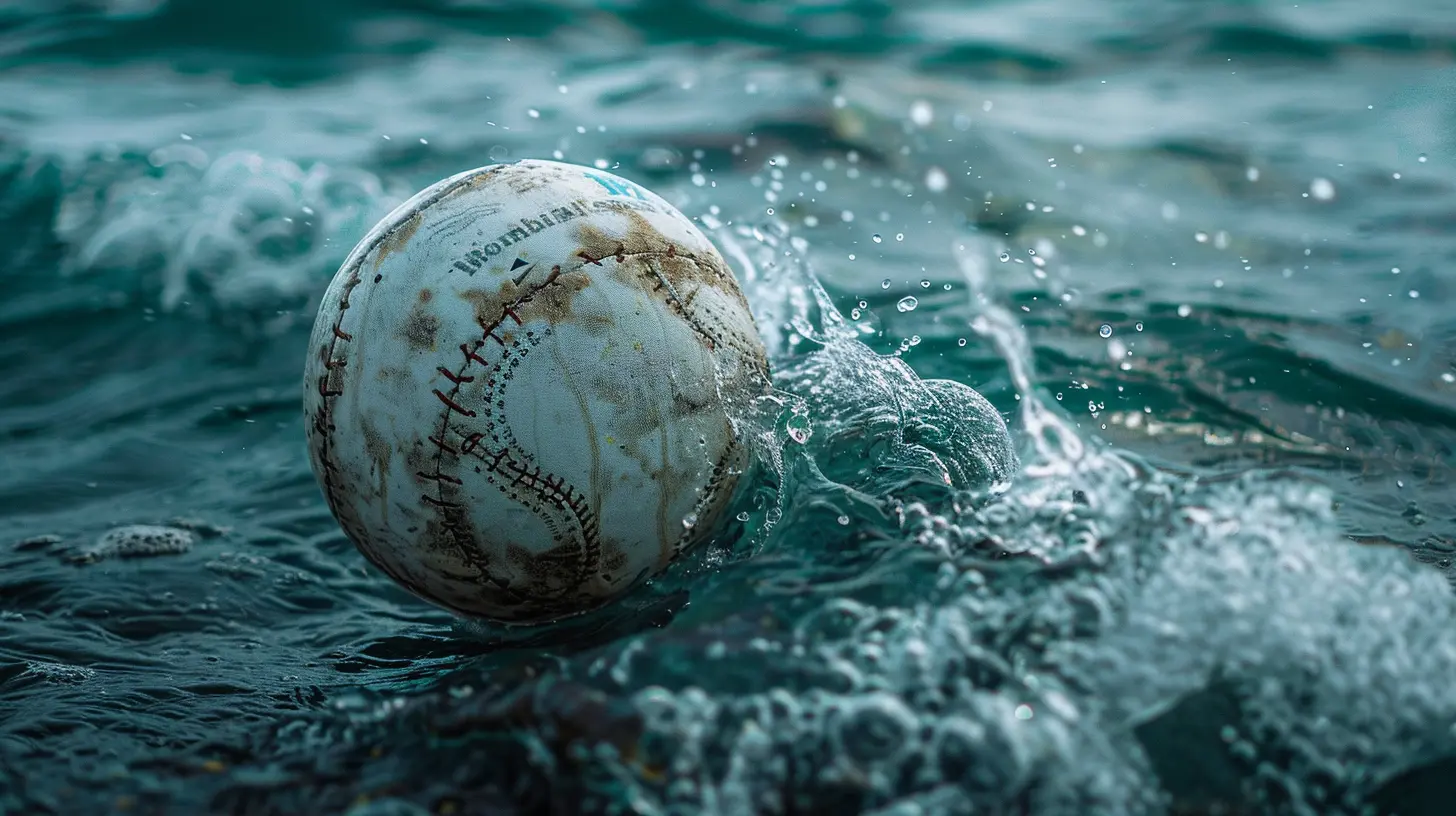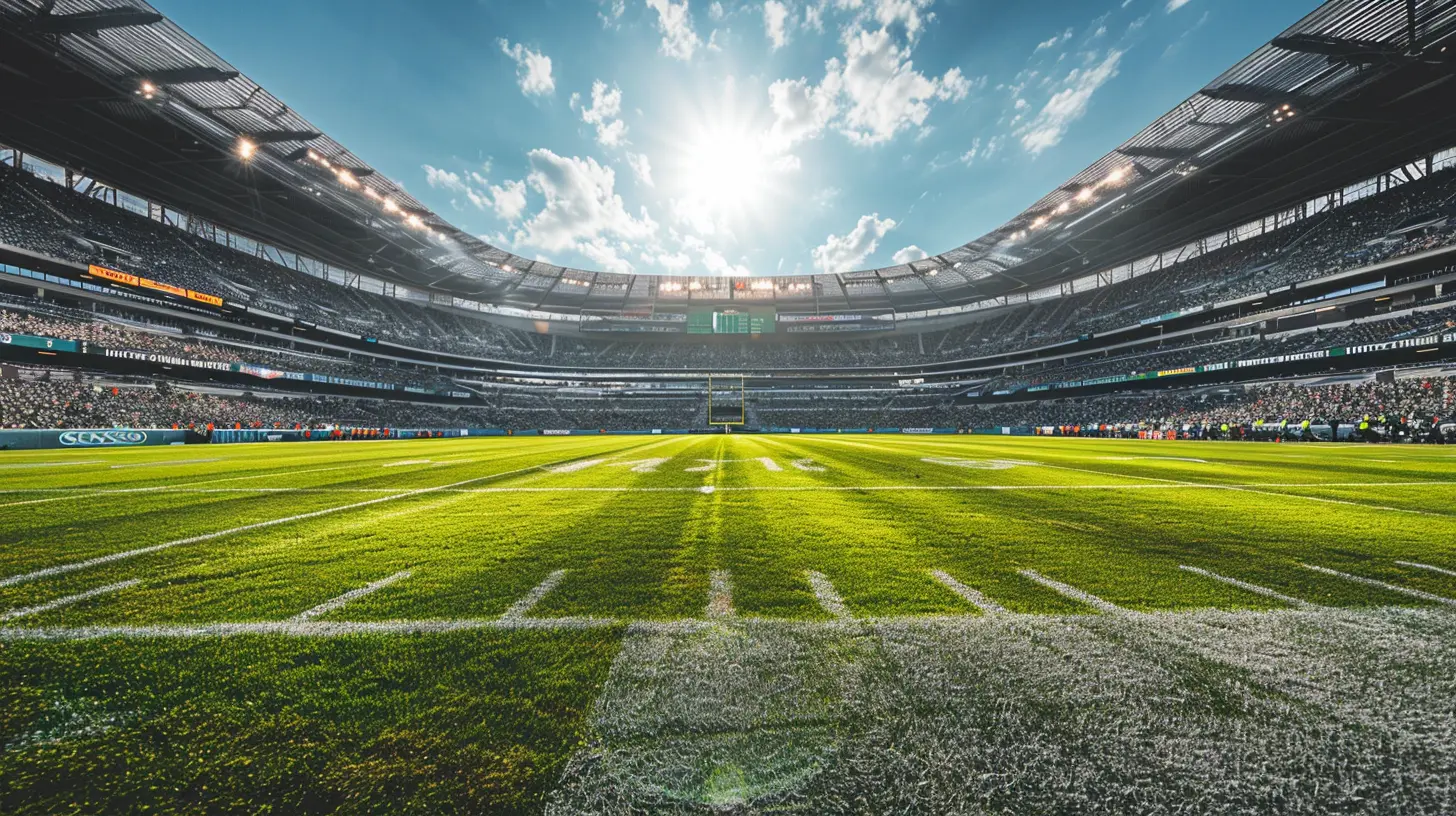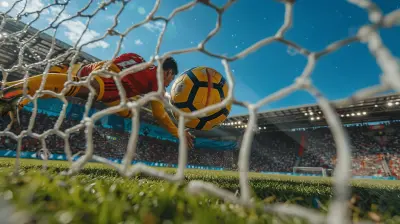How College Sports Are Adapting to Climate Challenges
29 May 2025
College sports have always been a cornerstone of American culture. From the electric atmosphere in packed stadiums during football games to the intense competition on the basketball court, these events bring communities together in a way that few other activities can. But as the world grapples with the ever-growing threat of climate change, college sports are starting to feel the heat—literally.
From sweltering summers to unpredictable weather patterns, it's clear that climate change isn't just an abstract concept anymore. It's here, and it's affecting everything, including how college sports are played, organized, and managed. So, how exactly are these institutions adapting to the climate challenges that are now part of our everyday reality? Let's dive in.

The Direct Impact of Climate Change on College Sports
Rising Temperatures: A Hot-Button Issue
One of the most obvious ways climate change is affecting college sports is through rising global temperatures. Over the past few years, there have been record-breaking heatwaves across the U.S., and this trend shows no sign of slowing down. College athletes, especially those participating in outdoor sports like football, soccer, and track, are being directly impacted by these extreme conditions.Imagine running drills under the sweltering sun in August—it’s not just uncomfortable; it's dangerous. Coaches and athletic staff are now more concerned than ever about the risk of heat strokes and other heat-related illnesses. In response, college programs are adjusting their schedules by moving practices earlier in the morning or later in the evening to avoid peak heat. Hydration protocols are also being taken more seriously, with water breaks becoming more frequent.
Athletic departments are even investing in cooling stations and climate-controlled facilities to help athletes recover more effectively. It's a balancing act between pushing athletes to perform at their best and ensuring their safety in increasingly harsh conditions.
Unpredictable Weather: Navigating the Storm
If you thought rising temperatures were the only issue, think again. Unpredictable weather patterns caused by climate change are another major concern. Storms are becoming more frequent and more intense, leading to canceled games, delayed practices, and even damage to facilities.Take hurricanes, for example. Colleges in coastal areas are now at higher risk of having their seasons interrupted by these catastrophic storms. Every year, teams in the Southeast face the possibility of having to evacuate, reschedule games, or even relocate entire tournaments due to these natural disasters.
In response, athletic programs are becoming more flexible and proactive in their scheduling. You might see backup dates for games or even alternative locations being set up in advance to ensure that seasons can continue with minimal disruptions.

The Indirect Impact of Climate Change on College Sports
Financial Strain: More Than Just a Game
While we tend to focus on the physical impact of climate change on athletes and games, there's another aspect to consider: the financial toll. Climate challenges are putting a strain on college budgets, and that includes athletic departments.For instance, the cost of repairing or upgrading facilities after extreme weather events can be astronomical. Whether it’s reinforcing football stadiums to withstand stronger winds or installing state-of-the-art drainage systems to handle heavy rain, these costs add up.
Additionally, colleges are investing in green initiatives to combat their own carbon footprints. While these efforts are commendable, they don’t come cheap. Solar panels, energy-efficient lighting, and even sustainable turf for fields are becoming common additions, but they require significant upfront capital.
The financial pressure means that smaller colleges with less robust athletic programs may struggle to keep up with these necessary adaptations. Unfortunately, this could lead to a widening gap between well-funded programs and those just scraping by.
Recruitment and Retention: The Climate Factor
Believe it or not, climate change is also affecting college sports recruitment. Athletes are more aware of environmental issues than ever before, and many are factoring climate conditions into their decisions about where to play.For instance, a top-tier football recruit might think twice about committing to a school in a region prone to extreme heatwaves or hurricanes. Similarly, a cross-country runner could opt for a college in a cooler, more temperate climate to avoid the health risks associated with running long distances in excessive heat.
Coaches and recruitment teams are now having to sell not just their programs but also their climate resilience. And it's not just about the weather—eco-conscious athletes are increasingly choosing schools that are committed to sustainability. Colleges that promote green initiatives and demonstrate a proactive stance on climate change may have an edge in attracting top talent.

How Colleges Are Adapting: Innovative Solutions and Green Initiatives
Sustainable Facilities: Greening the Game
One of the most exciting ways colleges are adapting to climate challenges is through the creation of sustainable sports facilities. Universities across the country are investing in eco-friendly stadiums, gyms, and training centers.For example, many schools are installing solar panels on athletic buildings to reduce energy consumption. Others are using recycled materials to build new facilities, and some are even implementing rainwater collection systems to irrigate fields.
Sustainable turf is another growing trend. Traditional grass fields require a lot of water and maintenance, which becomes even more challenging during droughts. In response, some colleges are switching to synthetic, eco-friendly turf that requires less water and upkeep while still providing a safe playing surface for athletes.
Embracing Technology: From Data to Drones
Technology is playing a pivotal role in helping college sports programs adapt to climate challenges. Advanced weather-tracking systems are now a staple in many athletic departments, allowing coaches and staff to monitor conditions in real time and make informed decisions about practice times, game days, and even player safety.Some colleges are even using drones to survey fields and facilities after extreme weather events. These drones can quickly assess damage and help teams respond efficiently, minimizing downtime.
And it's not just about safety—technology is also being used to improve sustainability. Data analytics tools are helping colleges track their energy usage, water consumption, and carbon footprints, allowing them to make targeted improvements and reduce their environmental impact.

The Role of Athletes in Climate Activism
Using Their Platforms for Good
Athletes, especially college athletes, are in a unique position to influence public opinion. As climate change becomes a more pressing issue, many athletes are using their platforms to advocate for environmental causes.Younger generations are leading the charge when it comes to climate activism, and college athletes are no exception. Whether it’s participating in campus sustainability initiatives or using social media to raise awareness, athletes are finding ways to make their voices heard.
Some athletes are even taking things a step further by organizing climate-focused events, like charity runs or games that raise money for environmental organizations. Others are teaming up with brands or nonprofits to promote green initiatives. In a world where athletes are often seen as role models, their voice on climate change can be incredibly impactful.
Balancing Performance with Environmental Responsibility
It’s not just about activism; college athletes are also increasingly aware of their own environmental impact. Many are making a conscious effort to reduce their carbon footprints, whether by opting for plant-based diets, choosing eco-friendly travel options, or advocating for more sustainable practices within their teams.For example, some athletes are pushing for the use of reusable water bottles instead of single-use plastics, while others are encouraging their schools to invest in greener transportation options, like electric buses for team travel.
College sports have traditionally placed performance above all else, but it's clear that today's athletes are looking to strike a balance between excelling in their sport and being responsible stewards of the planet.
Looking Ahead: The Future of College Sports in a Changing Climate
A Changing Game
It’s evident that the climate challenges facing college sports aren’t going away anytime soon. As the world continues to warm and weather patterns become more unpredictable, colleges will need to keep adapting—both on and off the field.In the future, we may see even more drastic changes, like shifting entire seasons to avoid extreme weather or moving certain sports indoors altogether. Colleges might also start investing in new technologies, like climate-controlled stadiums or advanced cooling gear for athletes.
But while these challenges are daunting, they also present an opportunity. College sports programs have the chance to lead the way in climate adaptation and sustainability. By embracing innovation, investing in green initiatives, and empowering athletes to take action, colleges can ensure that their sports programs not only survive but thrive in the face of climate change.
The Power of Community
At the end of the day, college sports are more than just games—they're about community. And as we face the challenges of climate change, it's going to take a collective effort to make a difference. Whether you're a coach, athlete, fan, or administrator, everyone has a role to play in ensuring that college sports continue to be a source of joy and inspiration for generations to come.So, the next time you cheer for your favorite college team, remember that the game is evolving, and together, we can help shape its future in a way that’s not just good for the sport, but for the planet.
all images in this post were generated using AI tools
Category:
College SportsAuthor:

Everett Davis
Discussion
rate this article
3 comments
Astoria McGee
College sports are at a crossroads, merging athletic traditions with sustainability. From eco-friendly facilities to carbon-neutral events, these adaptations not only reflect environmental responsibility but also engage a generation of athletes and fans who prioritize sustainability, paving the way for a greener future in sports.
June 5, 2025 at 11:16 AM

Everett Davis
Absolutely! The integration of sustainability in college sports is essential for fostering environmental responsibility and appealing to eco-conscious athletes and fans, ensuring a brighter future for both sports and our planet.
Faelan Hudson
Playing in snow? Just call it ‘home field advantage!’
May 31, 2025 at 11:30 AM

Everett Davis
Absolutely! Embracing local conditions can enhance team morale and bring a unique edge to home games.
Rachael McAleer
Great insights! It's encouraging to see college sports taking steps towards sustainability. Every effort counts in addressing climate challenges. Thank you!
May 30, 2025 at 2:34 AM

Everett Davis
Thank you for your positive feedback! It’s inspiring to see the commitment to sustainability in college sports. Every effort truly makes a difference!



